When it comes to building retaining walls, sea walls, or other large-scale structures, concrete blocks are often the go-to solution due to their durability and strength. However, choosing between large modular concrete blocks or small modular concrete blocks can be tricky. Large blocks may be more efficient for quickly constructing a large wall, while small blocks can offer more flexibility and customization options. In this blog, we will compare both and explore the benefits and drawbacks to help you make an informed decision for your next project.
What are modular concrete blocks?
Modular blocks (also known as interlocking blocks), are precast concrete elements that are designed to fit together seamlessly. They come in a variety of sizes and shapes and can be used in a wide range of construction projects.
With modular construction, comes design flexibility. No matter what you’ve chosen, you can often use large or small blocks for retaining walls, seawalls and erosion protection. Their interlocking design allows them to be stacked on top of each other without the need for mortar or other adhesives, making them quick and easy to install. Made from concrete, blocks are durable, weather-resistant, and require minimal maintenance. This makes them a popular choice for a variety of commercial and residential applications.
Large and Small Modular Block Retaining Walls
Large modular concrete blocks have to be installed with machinery as they’re too heavy/big to place by hand. Depending on what range you choose, blocks can weigh from 150 kgs to over 1500 kgs (1.5 tonnes). Because of their size and weight, they are often used instead of traditional options like tilt slab or timber, as they can be assembled quickly and with less labor inputs. The Interbloc and Stonebloc systems have large modular concrete blocks as the primary element in their ranges.
Interbloc Installation
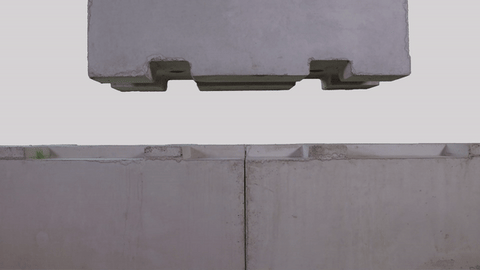
Stonebloc Installation
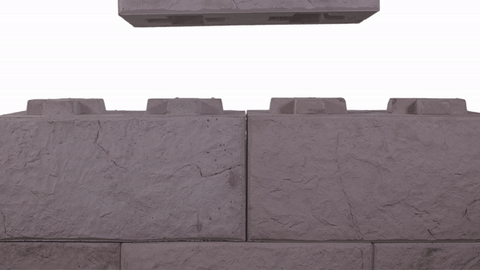
In many instances, small modular blocks can be installed by hand. Ranging from around 100-300mm wide and weighing from 8-30 kgs, heavy machinery is not often needed for installation. Like their large block counterparts, you can use these blocks for larger structures such as tall (above 2m) retaining walls and seawalls. They are more catered to smaller projects, however. Commonly used in landscaping projects, garden walls, and other smaller scale structures. Despite their smaller size, small modular concrete blocks are still durable and long-lasting, making them a practical choice for a variety of residential and commercial projects.
Features of Large and Small Modular Blocks
- Size and Weight: Large modular concrete blocks are significantly larger and heavier than standard concrete blocks, making them capable of withstanding high amounts of pressure and weight. Small modular blocks can still achieve much of the outcomes that larger blocks can, they may just need more components to do so
- Interlocking Design: Much like LEGO, these blocks have an interlocking design that allows them to be stacked and locked together. This feature makes them quick and easy to install, saving time and labour costs. In the case of Interbloc and Stonebloc, the combination of their size, weight, and interlocking shear key allows overturning forces to be resisted
- Durability: Concrete is designed to withstand harsh weather conditions, erosion, and other environmental factors, making them long-lasting and low-maintenance. For Interbloc and Stonebloc, there is a minimum 20 MPA.
- Versatility: These blocks can be used for a wide range of applications for various industries including construction, civil, rural, and more.
- Cost-Effective: Overtime, the cost of large modular blocks can be more efficient compared to traditional systems. With lower maintenance requirements and non-destructive dismantling you can build for now and plan for the future.
With these blocks, try building:
| Application | Large Modular Concrete Blocks | Small Modular Concrete Blocks | Image Example | |
| Gravity retaining walls | ✅ | ✅ | 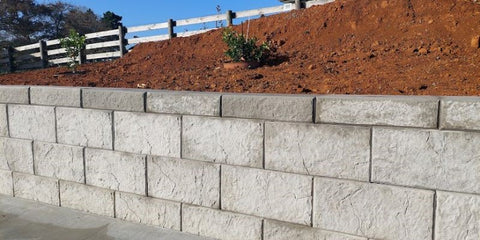 | |
| MSE retaining walls | ✅ | ✅ | 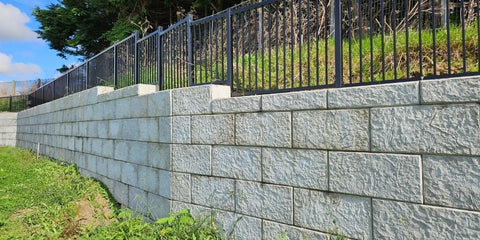 | |
| Seawalls | ✅ | 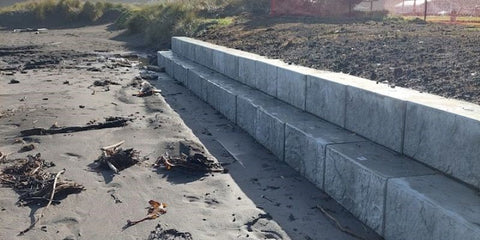 | ||
| Aggregate Bins | ✅ | 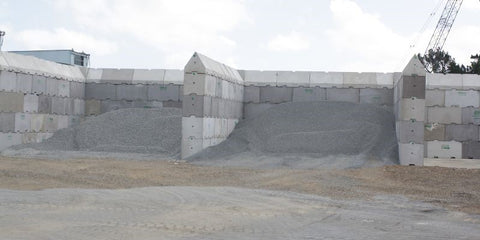 | ||
| PKE/Feed Bins | ✅ | 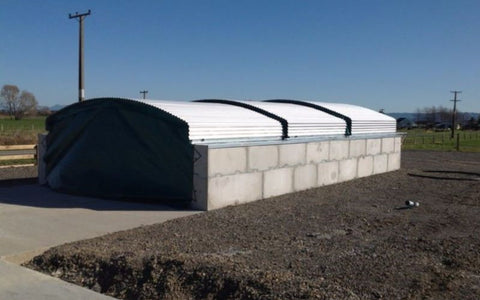 | ||
| Fertilizer Bins | ✅ | 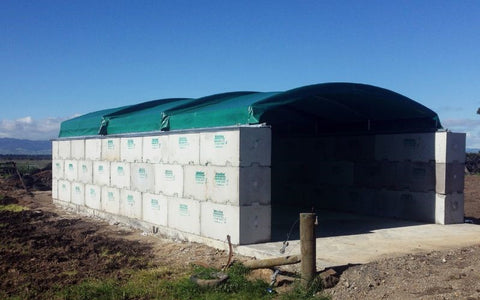 | ||
| Culverts | ✅ | 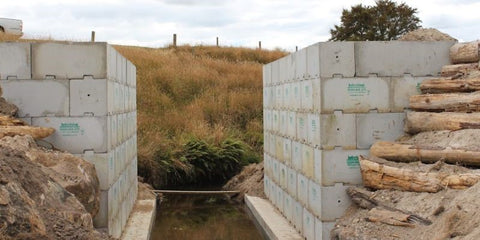 | ||
| Silage Bunkers | ✅ | 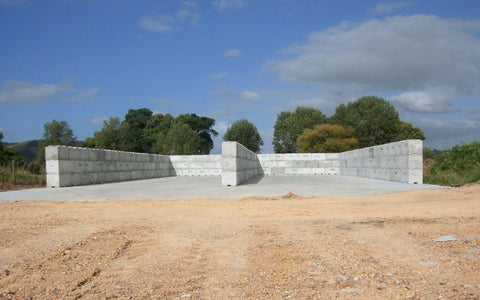 | ||
| ✅ | 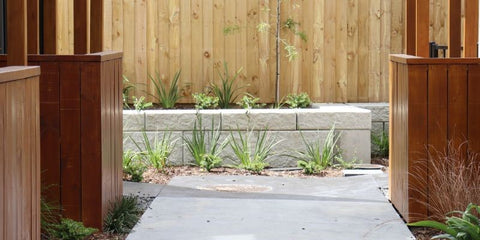 | ||
| ✅ |  |
Pros and cons of Large and Small Modular Blocks
LARGE MODULAR BLOCKS
Speed of installation is one of the largest benefits you’ll gain with a large modular concrete block. With our own ranges - Interbloc and Stonebloc - two people can build from 120-160m2 of wall per day. Adding to the installation efficiency, you don’t need to add mortar or other adhesives. Being made of strong concrete (for our blocks, it’s a minimum of 20 MPA), large modular concrete blocks are resistant to harsh weather conditions, erosion, and other environmental factors . With worsening weather throughout New Zealand, this will reassure you that your structures will be long-lasting.
Typically, large modular concrete blocks have low maintenance requirements making them a practical and sustainable option. Interbloc is more sustainable than the standard large blocks. Made for high-quality certified wet excess concrete, they’re low carbon, zero waste (verified by an EPD). Overall, the combination of these advantages makes large modular concrete blocks an attractive option for construction projects that require a durable, efficient, and cost-effective solution.
Access and design flexibility are the two main areas where large modular concrete blocks perform weakly. With blocks being around 1m long and up, equipment large enough to lift the blocks is needed. Getting this machinery on-site requires space for loading/unloading, ruling out tight sites (and therefore large modular blocks).
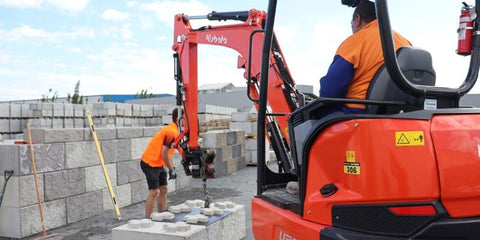
For larger concrete blocks like Stonebloc, heavy machinery like an excavator is needed for installation.
Depending on the range that you choose, large modular concrete blocks may not be able to accommodate complex curves or angles. This will result in changes to a design or custom blocks to fit the project - both which Interbloc and Stonebloc can assist you with.
SMALL MODULAR BLOCKS
Maneuverability and flexibility are the biggest advantages to small modular concrete blocks. Although you can build large developments with this, small projects can be more difficult to use. Additionally, small modular concrete blocks are highly versatile and customizable, coming in a variety of sizes, shapes, and colors, allowing for creative design options. Another advantage of small modular concrete blocks is their durability. They are made of high-quality concrete materials that can withstand harsh weather conditions, erosion, and other environmental factors, making them a long-lasting option for construction projects. Finally, small modular concrete blocks are cost-effective, as they require less labor than traditional masonry construction methods, resulting in cost savings for construction projects. Overall, the combination of these advantages makes small modular concrete blocks a practical and efficient option for construction projects that require a durable, cost-effective, and customizable solution.
To achieve great heights and lengths of retaining walls, small modular blocks can be inefficient. With smaller facial m2, installation for larger projects can be labored. Coupling this with some smaller block solutions needing fiberglass pins per block for vertical reinforcing, you may have an installation with a long duration (costing you time and money).
Comparison of Large and Small modular concrete block retaining walls
Both large and small modular block options have their advantages and disadvantages. However, large modular concrete blocks offer several distinct advantages that make them a superior option for many construction projects.
One of the main advantages of large modular concrete blocks is their size and weight. While this can be seen as a potential disadvantage, their size and weight also make them highly durable and able to withstand harsh weather conditions and environmental factors. Large modular concrete blocks are ideal for large-scale projects that require significant structural support, such as retaining walls, sea walls, bins, and bunkers.
In addition to their durability, large modular concrete blocks also offer an efficient and cost-effective solution for construction projects. Their easy and quick installation process, requiring less labour than traditional poured concrete construction, makes them a practical option for projects with tight timelines and budgets. Additionally, their interlocking design eliminates the need for mortar or other adhesives, resulting in a faster and more efficient assembly process.
Large modular concrete blocks are also highly versatile, coming in a variety of sizes, shapes, and colors. This allows for creative design options and customization for specific project requirements. Finally, large modular concrete blocks are a low-maintenance option, requiring minimal upkeep and providing a long-lasting solution for construction projects.
While small modular concrete blocks may have some advantages, such as ease of installation and high customizability, they may not be suitable for larger-scale projects that require significant structural support. Additionally, their interlocking design may limit the complexity of design options available.
In conclusion, large modular concrete blocks offer several advantages that make them a practical and efficient option for many construction projects. Their durability, easy installation process, versatility, and low maintenance requirements make them a superior option over small modular concrete blocks for large-scale projects that require significant structural support.









